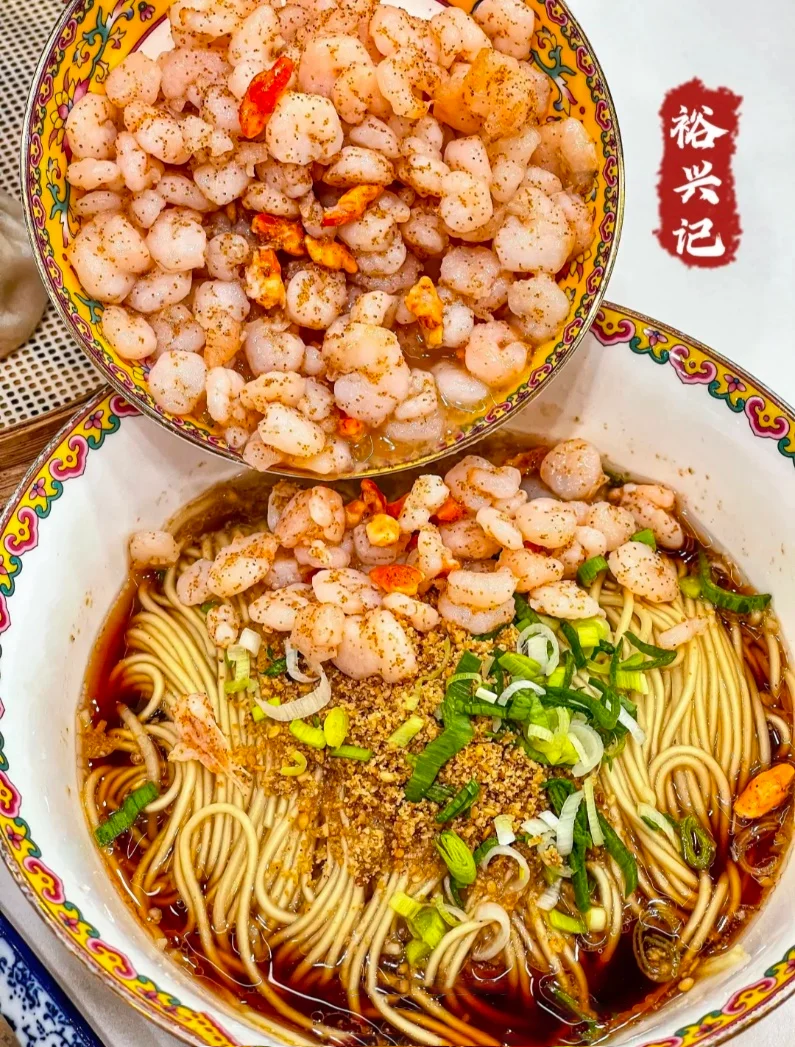China is a vast country with diverse culinary traditions, and while rice is a staple in many regions, noodles hold a special place in the hearts of food lovers across the nation. If you’re a fan of pasta or any type of noodle dish, you’re in for a treat. Each region in China has its own unique take on noodles, offering a wide range of flavors and textures that are sure to delight your taste buds. Whether you’re a seasoned traveler or a food enthusiast looking for your next adventure, exploring China’s noodle scene is an experience you won’t want to miss.
The North: Bold and Heartfelt
In the northern regions of China, noodles are more than just a meal; they are a reflection of the hearty and robust spirit of the land. Here, the climate and agricultural traditions favor wheat, resulting in a diverse array of noodles that are as comforting as they are flavorful.
Xinjiang La Tiao Zi (Hand-Pulled Noodles)
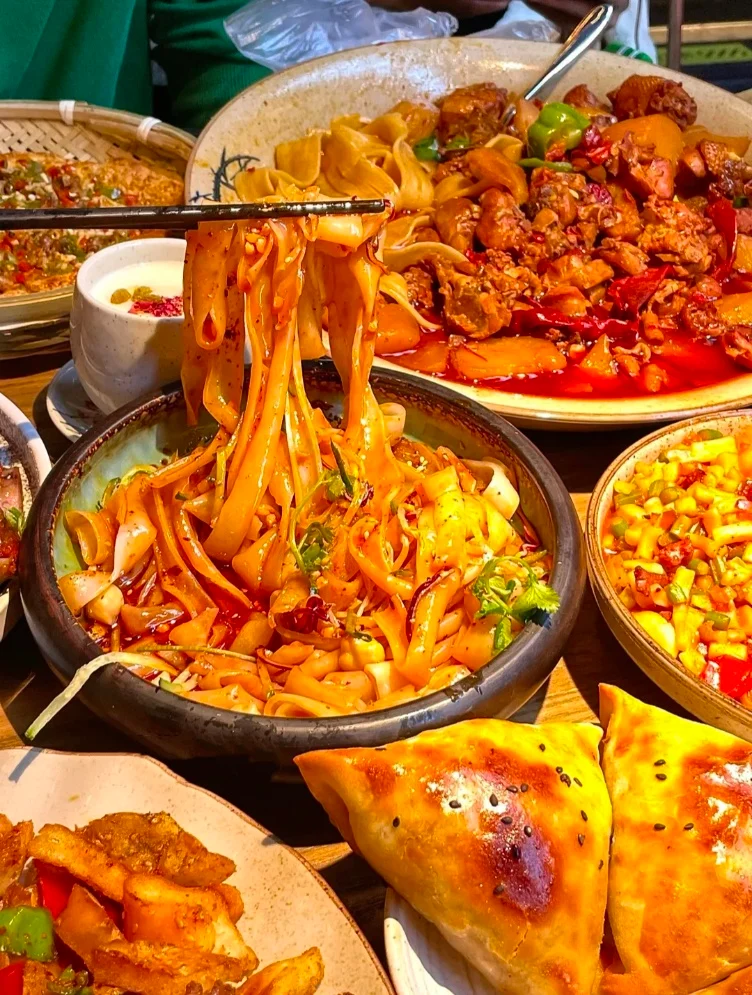
Xinjiang, with its unique blend of cultures, offers La Tiao Zi, a noodle that demands both skill and patience. Made from high-protein wheat flour, these noodles are hand-pulled to achieve their distinctive chewiness. The process involves multiple rounds of kneading, resting, and rolling, resulting in a texture that is firm yet yielding. Paired with succulent meats and fresh vegetables, and seasoned with aromatic spices, La Tiao Zi is a dish that showcases the region’s culinary prowess.
Shanxi Dao Xiao Mian (Knife-Shaved Noodles)
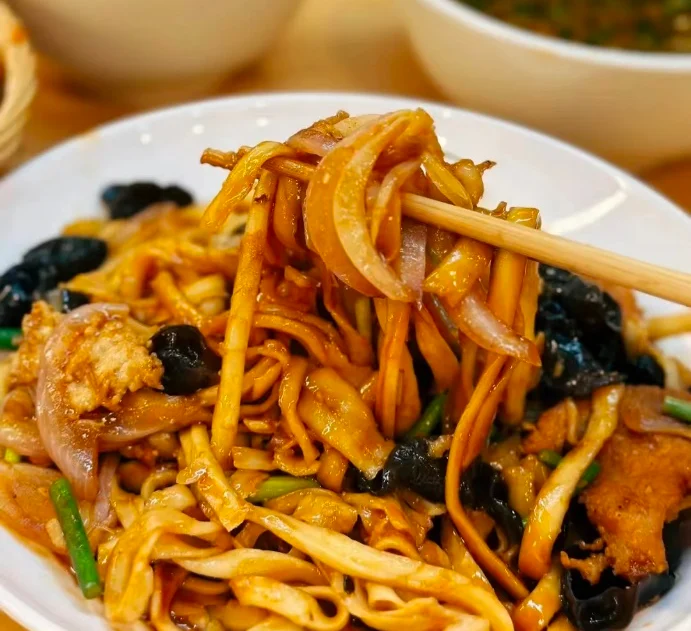
Shanxi is renowned for its emphasis on the texture of noodles. Dao Xiao Mian is a prime example, where the art of noodle-making is elevated to a performance. Skilled chefs shave the dough into the boiling water with such precision that each noodle resembles a willow leaf, thin at the edges and slightly thicker in the middle. The result is a noodle that is smooth on the outside and chewy on the inside, perfect for soaking up rich sauces. This dish is a testament to the dedication and craftsmanship of Shanxi’s noodle artisans.
Beijing Zhajiangmian (Fried Sauce Noodles)
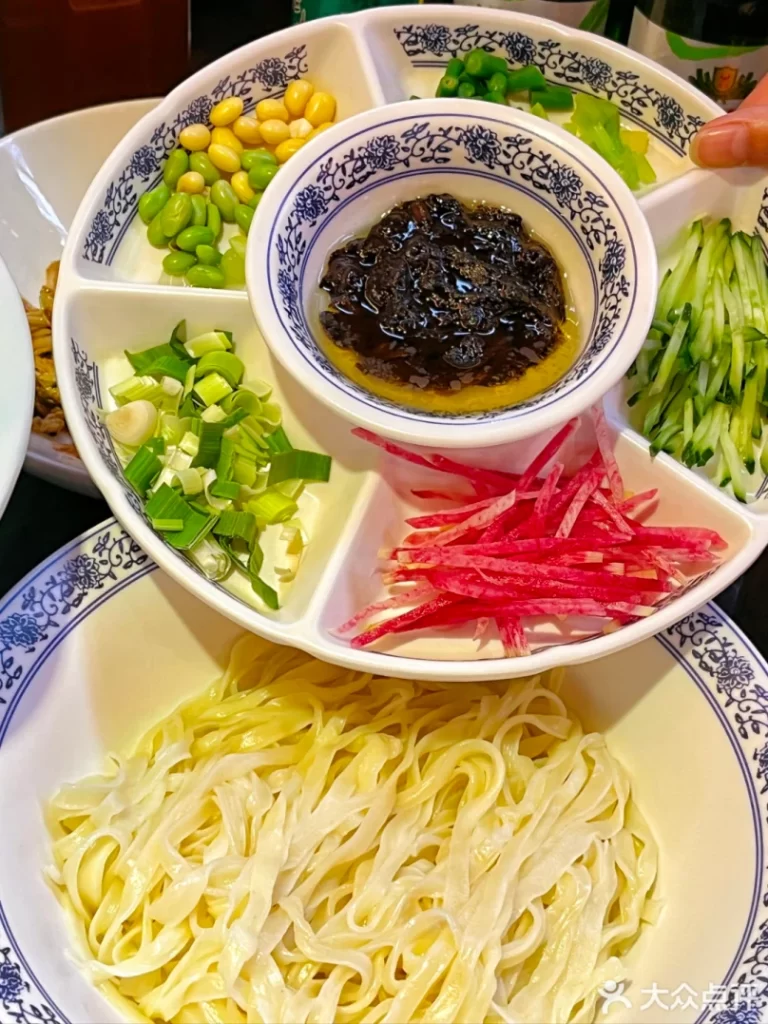
Beijing’s culinary crown jewel, Zhajiangmian, is a dish that captures the essence of the capital’s food culture. The key components are the fried sauce, the noodles, and the toppings. The sauce is a blend of yellow soybean paste and sweet flour paste, cooked to a rich, savory consistency. The noodles are traditionally hand-made, ensuring a texture that is both springy and satisfying. Topped with a variety of seasonal vegetables, from spring’s fragrant Chinese toon to winter’s crisp radishes, Zhajiangmian is a symphony of flavors and textures that is best enjoyed with a generous helping of garlic.
Shaanxi Biangbiang Mian
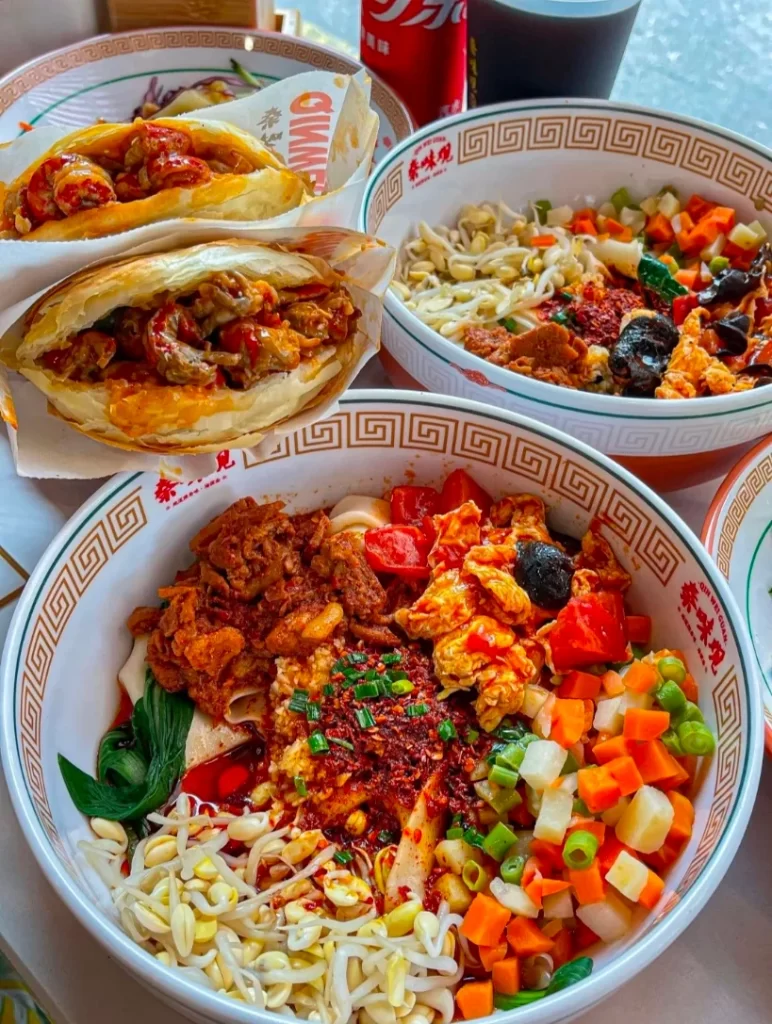
Shaanxi’s Biangbiang Mian is a dish that defies convention. Known for its massive, belt-like noodles, this dish is a celebration of abundance. Each noodle is thick and substantial, often weighing half a pound or more. The beauty of Biangbiang Mian lies in its versatility; you can top it with anything from savory sauces to fresh vegetables. The crowning glory is the chili oil, made from high-quality chili powder and hot oil, which adds a fiery kick that complements the hearty noodles perfectly.
Lanzhou Niurou Mian (Lanzhou Beef Noodles)
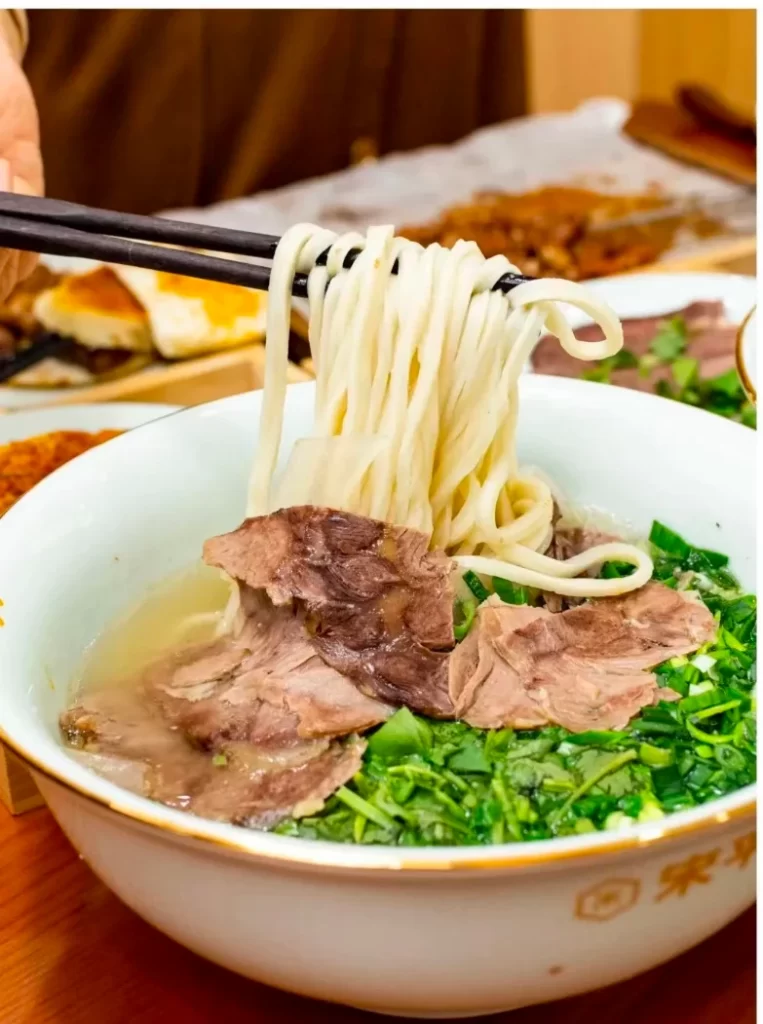
Lanzhou is synonymous with its beef noodles, a dish that has become a national favorite. The secret lies in the unique process of making the noodles, which involves adding “peng hui” (a type of alkali) to enhance their elasticity. The noodles are then meticulously hand-pulled, resulting in a texture that is both tender and chewy. The broth is a masterpiece in its own right, clear yet flavorful, with a perfect balance of spices. Topped with slices of tender beef, white radish, and fresh herbs, Lanzhou beef noodles are a comforting bowl of warmth and tradition.
The South: Delicate and Diverse
While the north prides itself on hearty and robust noodles, the south takes a more refined approach. Here, noodles are often seen as a canvas for intricate flavors and delicate ingredients. The climate, which favors rice over wheat, has led to a unique noodle culture that is as diverse as it is delicious.
Zhejiang Pian Xian (Shrimp and Pork Noodles)

Zhejiang’s Pian Xian is a dish that embodies the subtlety and elegance of southern cuisine. The noodles are made with a higher alkaline content to enhance their texture, resulting in a springy and slightly chewy bite. The broth is light yet flavorful, often infused with the essence of shrimp and pork. Topped with tender slices of pork, succulent shrimp, and fresh vegetables, Pian Xian is a dish that showcases the harmony of flavors and the art of understatement.
Sichuan Yibin Ran Mian (Yibin Flaming Noodles)
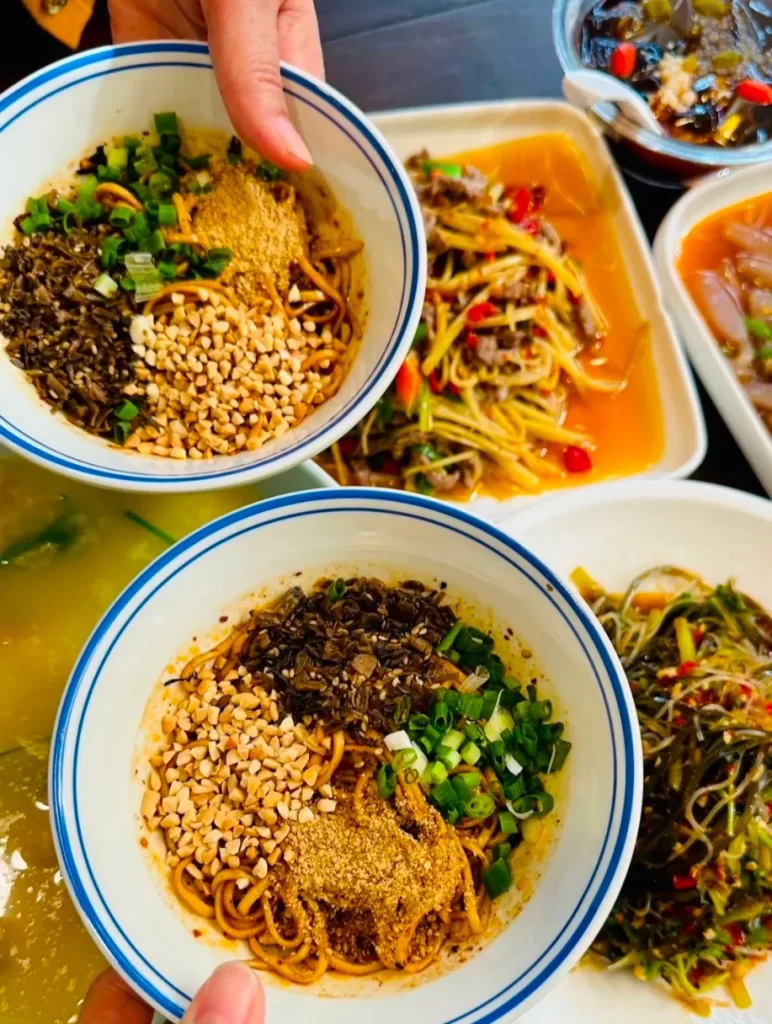
Sichuan is famous for its bold flavors, and Yibin Ran Mian is no exception. This dish is a fiery explosion of flavors, with a complex blend of spices and seasonings. The noodles are alkaline-based, giving them a unique texture that is both springy and slightly chewy. The toppings are where this dish truly shines, with a variety of ingredients that add layers of flavor. From the crispy pork to the fragrant Sichuan peppercorns, Yibin Ran Mian is a dish that will leave your taste buds tingling.
Guangdong Zhu Sheng Mian (Duck Egg Noodles)
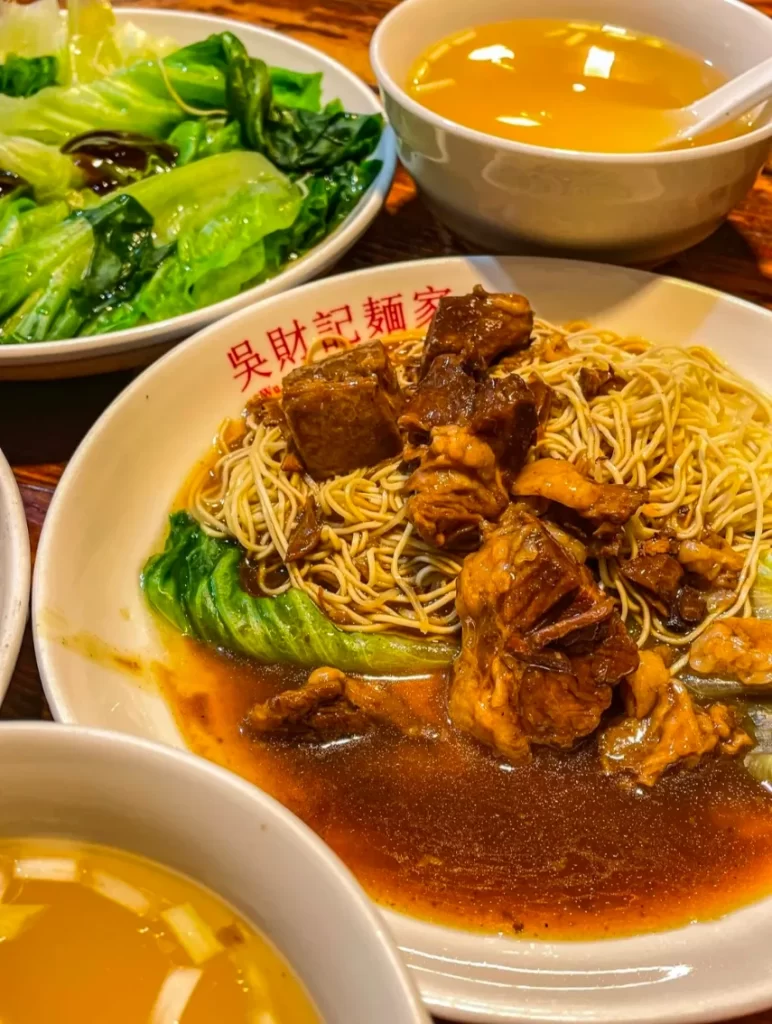
Guangdong’s Zhu Sheng Mian is a testament to the region’s culinary ingenuity. These noodles are made with minimal alkaline content, resulting in a texture that is both smooth and elastic. The secret lies in the use of duck egg whites, which add a unique richness and chewiness to the noodles. The noodles are often served in a broth made from earth fish and shrimp roe, simmered for hours to achieve a depth of flavor that is both delicate and profound. Zhu Sheng Mian is a dish that highlights the subtlety and sophistication of Guangdong cuisine.
Wuhan Re Gan Mian (Hot Dry Noodles)

Wuhan’s Re Gan Mian is a dish that has become synonymous with the city itself. The noodles are alkaline-based, giving them a distinctive chewy texture. The key to this dish is the sauce, a blend of sesame paste, soy sauce, and other seasonings that create a rich, savory flavor. Topped with pickled vegetables and fresh herbs, Re Gan Mian is a dish that is both comforting and satisfying. A bowl of sweet rice wine on the side completes the experience, making it the perfect breakfast or snack.
Fujian Mian Xian Hu (Noodle Soup)
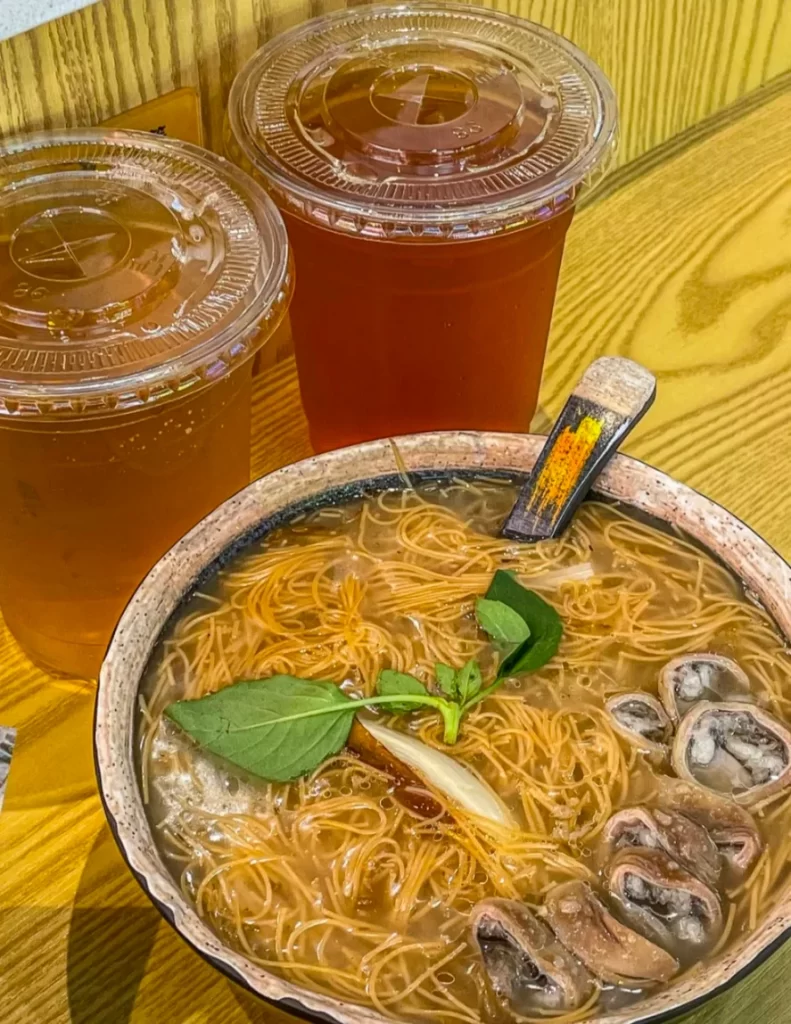
Fujian’s Mian Xian Hu is a dish that captures the spirit of the region’s coastal lifestyle. The noodles are made through a labor-intensive process that involves stretching the dough into long, thin strands. The broth is rich with the flavors of the sea, often infused with a variety of seafood such as shrimp, clams, and fish. Topped with fresh vegetables and herbs, Mian Xian Hu is a dish that is both nourishing and flavorful, a true reflection of Fujian’s culinary heritage.
A Culinary Adventure Awaits
Whether you’re drawn to the hearty, robust flavors of the north or the delicate, intricate dishes of the south, China’s noodle culture offers a culinary journey like no other. Each region has its own unique take on this beloved staple, creating a diverse array of dishes that are as satisfying as they are flavorful. So why not embark on a noodle tour of China? From the bustling streets of Beijing to the serene landscapes of Fujian, each bowl of noodles is a story waiting to be told.

